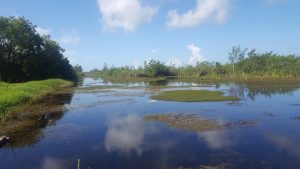The magnolia conservation project that started in Topes de Collantes ten years ago is aiming to protect other magnolia species in the mountains of Eastern Cuba. Majela and her team look for Magnolia cristalensis, an endemic species of the region.
Date: 12/13/2019
Project: Conservation of threatened Mountain species.
The journey from Havana to “El Toldo” in Eastern Cuba seemed endless. It took almost three days and included going uphill on mules. What could possibly brought us here, to a site that is 1175 m over the sea level? We wanted to find and count individuals of Magnolia cristalensis, an endemic species threatened with extinction. Once we know how many of these plants remain in their natural habitat we will be able to assess its risks.





